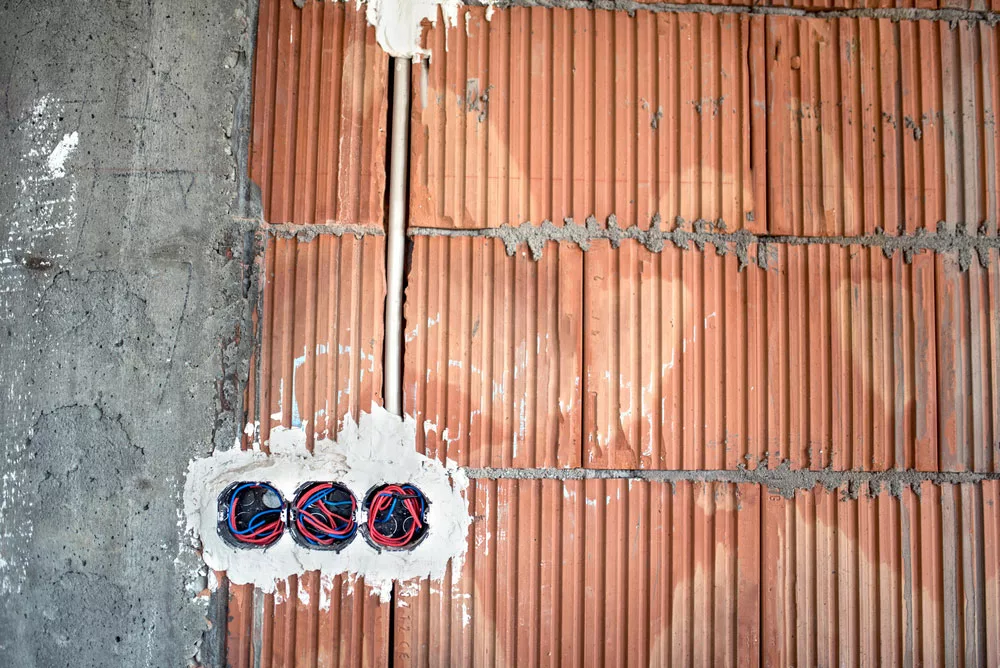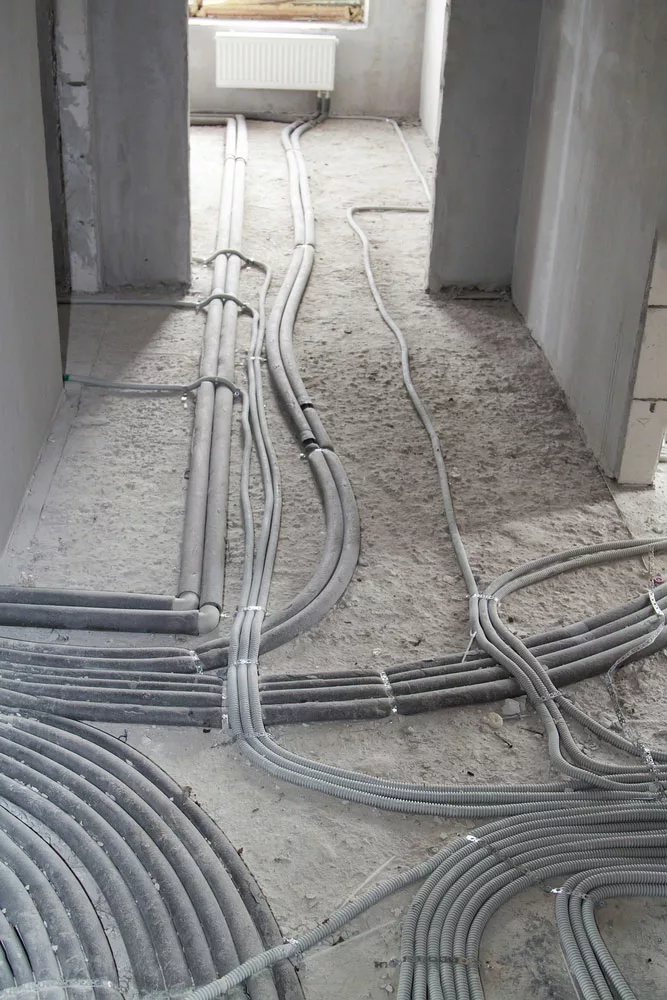In the market, you can find different cables to use in the home or commercial areas. However, if you need to put the wires, especially the ethernet cable, inside walls or other closed spaces, and not the plenum areas, you must choose the Riser-rated cable assembly. Let’s dig into it.
Table of Contents
- Getting To Know Riser Cable
- Types Of Ethernet Riser Cables
- Where Can You Install Ethernet Riser Cables?
- Other Ethernet Cable Jacket Ratings
- Conclusion
Getting To Know Riser Cable
Riser cables run inside drywall and between floors of the non-plenum places. These cables get the name “riser” due to their way of installation: rising the floor and then running the cable. Moreover, riser cables can play a significant role in constructing the network of internet, audio, or video communication.
In industry, they refer to the riser cable as “CMR, ” an abbreviation of Communication Riser. It is fire resistant cable, so you can put it in fire-hazardous areas. Also, CMR cables use materials like flame-resistant PVC as jacketing and Polyolefin (PO) for the insulation.
These compounds help the wire to perform best even in high temperatures. However, in most cases, the cable’s potential to conduct fire is reduced because of a Teflon coating or fibers set into the jacket.
What’s more, if the cable were to catch fire, the smoke and gases it would produce would harm humans.
The most popular type of cable jacket is riser cable since it is inexpensive and widely available. You can utilize cable with a riser rating everywhere in your building, EXCEPT in the plenum.

Caption: Network hubs using RJ45 riser cable
Types Of Ethernet Riser Cables
A wide variety of copper Ethernet riser cable types are on the market. There are various types, including Cat5e, Cat6, Cat6A, Cat7A, and Cat8. Each class also offers unique characteristics.
You can find Riser cables in several configurations. For example, the CMR cable can or cannot have a shield. In a nutshell, an unshielded cable is what you should choose for regular use in your home in non-EMI locations.
You can use the shielded cables to protect your network from electromagnetic interference (EMI) in environments like hospitals, airports, and factories. In a nutshell, an unshielded cable is what you should choose for regular use in your home in non-EMI locations.
Unshielded twisted pair (UTP) is the structural type you can find in such wires. Shielded Riser cables often have a F/UTP or FTP construction. The copper wires in these FTPs (Foil Twisted Pairs) have aluminum foil wrapping.
This layer is where to start if you want to shield yourself from electromagnetic interference. Maintaining a fully shielded channel is essential if you ever find yourself in need of a shielded cable. Among these are RJ45 plugs and keystone sockets.

Caption: Floor wiring with Riser Cable
Where Can You Install Ethernet Riser Cables?
You can install the riser cables mainly inside the walls of your house. However, some technicians may also run it under the floor or connect the router to computers and switches with its help.
The ability of riser cable to adjust in so many scenarios is because of its design and construction. These factors also help the technicians run these cables longer as they have a solid conductor. Solid conductors do not get abrasions and tears easily. Hence, it gives you sturdy signals while installing them inside the walls.
There are different methods to connect the Riser cables using RJ45 or keystone jacks. Choosing connectors will depend on where you install the wire, so choose accordingly.
For instance, a typical riser cable circuit inside a wall contains a riser cable that connects to the keystone jack. Then the jack further connects to the patch cable connecting to your device. You can place the keystone jack in a wall plate inside the bracket.
Other Ethernet Cable Jacket Ratings
Ethernet cable protects the thin inner wires via jacketing. These jackets can be of various designs that you can use for different applications.
Plenum Rated (CMP)
The contractor set up the HVAC system in the Plenum of the business building ( an office, school, hotel, motel, or another similar establishment). Even though it’s incredibly handy, you must take extra precautions to avoid fire and harmful smoke in these places.
The Plenum is an efficient path for fire and smoke to travel from one part of a building to another. Suppose the Plenum rating is not available on the cable. In that case, PVC will be exposed to fire, resulting in toxic fumes traveling inside the building, which might have a devastating impact on the health of the residents or employees.
Considering the importance of fire safety, you can check for the Plenum cable performance rating. Most Plenum cables use FEP (fluorinated ethylene propylene) (a flexible version of Teflon) as their primary material. When burned, FEP produces little smoke and is not hazardous.
Although plenum-rated wire can be anywhere, its high price per foot usually makes this impractical. It won’t be up to the installers to decide in the end. Whether or not to use Plenum-rated cables depends on local fire rules, insurance restrictions, and consumer preferences. However, it would be best never to run regular PVC cable into a Plenum.
General Use (CM/CMG)
Again, you can use PVC in CM-rated cable, but there is no extra fire protection this time. A fire using this cable will produce the same harmful smoke and fumes as one with any untreated plastic.
Connections within a single room, such as prefabricated patch cables from the wall to a computer, can be made with CM-rated cable in the business world. Secondary applications include non-intrusive horizontal metal cable trays that exposure to the atmosphere. This cable jacket is rarely used because of its limited availability in commercial buildings. Ordinarily, riser and plenum-rated jackets because of legal, insurance, or contractual requirements.
Outdoor (CMX)
Ethernet cable with a CMX rating is made specifically for usage in harsh environments, including the open air and even direct burial. Due to their UV rating, the installation guidelines for CMX-rated jackets vary from those for fire-rated jackets.
Outer jacket materials for CMX-certified cable are typically LLDPE rather than PVC. LLDPE can withstand sunlight and many climates without deteriorating. The internal architecture of the wire itself may also lend itself to direct burial. Because of its unique design, CMX cable can be pricey, though not as much as Plenum-certified cable.
Conclusion
Riser-rated cables are necessary when you run the wires between the walls or inside the floor in non-plenum areas. Other than that, you can also find Ethernet cables with different insulation ratings. Need help? Contact us now.
